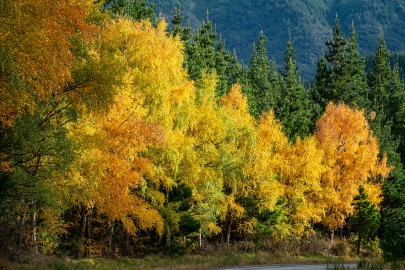
Naturalised flora near Hanmer Springs.
Dating from 2006, New Zealand’s existing inventory of naturalised plants was due for an overhaul. Working with university colleagues from Lincoln, Canberra, and Syracuse (USA), as well as the Department of Conservation, researchers from Manaaki Whenua recently undertook an updated inventory of the entire naturalised flora of New Zealand, comparing its taxonomic and functional distinctions from the native flora. The work also tested whether valid comparisons of functional traits between native and naturalised plants could be made, focusing on leaf nitrogen content in trees.
The results show how much a flora can change in a very short time. The researchers counted 1798 naturalised plant species in the 2020 dataset, an increase of over 100 species since 2006, including 39 species previously not listed. Of the total, 314 species are now classed as environmental weeds.
The new inventory shows that naturalised plants in general are more taxonomically diverse, more likely to be herbaceous, and less woody than native species. Naturalised trees are also, in general, more productive than native species, as shown by higher leaf nitrogen. More effective nutrient uptake may further promote invasions of naturalised tree species at the expense of native trees.
With proof-of-concept established, further comparison of functional traits, for example resistance to fire or grazing, will enable land managers and conservationists to assess how naturalised species affect ecosystem processes differently and to support better management of invasive plant species.
“Some invasive plants in New Zealand receive most of our attention, and for good reason, but it’s useful to look at the whole picture to better understand plant invasion and potential impact. We need to think about which species might be flying under the radar now but could become problems in the future,” says lead researcher Dr Angela Brandt.

